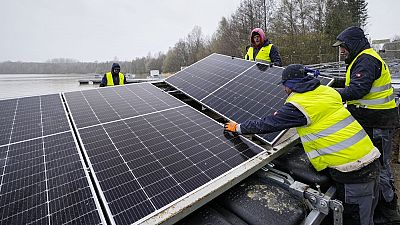By 2050, 70 per cent of the global population will live in urban areas - but not all cities are dealing with climate change equally well.
Many of Europe’s cities are leading the way on environmental action, a new report has revealed.
From encouraging public transport use to building more parks, there are plenty of ways that cities can fight climate change.
But which are leading the charge?
New analysis by Carbon Disclosure Project (CDP) - an environmental non-profit - awards 21 European cities the highest possible ranking for their climate transparency and action.
To gain this ranking, cities must disclose environmental data publicly and keep a city-wide emissions directory.
They must also have renewable energy targets and emissions reduction targets aiming for net zero by 2050, or a mid-term target aligned with the Paris goal of limiting warming to 1.5 degrees Celsius.
A city-wide climate adaptation plan is another crucial criteria for the grading.
“I am delighted to see so many major cities across Europe stepping up and taking their role in the climate crisis seriously,” says Mirjam Wolfrum, Director of policy engagement Europe at CDP.
“COP27 has reminded us that a wholesale transformation of our economy and society is needed to keep us within the 1.5 degree limit.
“We are nearly out of time, and these cities are leading by taking meaningful, science-based and effective action.”
Which European cities are doing the most to curb climate change?
Globally, 122 cities - out of the 1000 analysed - have been named as environmental leaders.
In Europe, Athens, Bærum, Barcelona, Braga, Florence, Guimarães, Helsingør, Lahti, Madrid, Malmö, Mannheim, Oslo, Oulu, Paris, Porto, Tampere, The Hague, Trondheim, Turku, Vantaa, and Vitoria-Gasteiz made the A list.
Cities on the A List take more than three times as many mitigation and adaptation measures as non-A List cities, the CDP analysis suggests.
For European cities, these measures took varied forms.
Athens, for example, has installed solar systems on 50 schools to cover 110 per cent of their energy needs.
Paris plans to renovate a million homes by 2050. As part of the city’s ‘circular economy drive,’ half of local construction sites will be ‘zero waste to landfill’ by 2030.
In Oslo, local floodway development is informed by the impacts of extreme rain.
While in Porto, the city’s 46-gigawatt electricity contract for all municipal infrastructure is 100 per cent renewable.
Globally, the list of top-performing cities spans every continent.
Several cities in the Global South also made the list - including some of those most impacted by the effects of climate change.
Mumbai is the first Indian city to get the top ranking. Lima (Peru), Quito (Ecuador), Yaoundé (Cameroon), and Amman (Jordan) also joined the list of leaders.
Why does environmental action matter in cities?
70 per cent of energy-related greenhouse gas emissions are released in cities.
This figure is only set to increase as urban areas swell in size. By 2050, 70 per cent of the world’s population will live in urban areas.
These people will be particularly vulnerable to the impacts of climate change. At least 130 port cities with over one million inhabitants are expected to be affected by coastal flooding in the coming decade.
Urban areas can act as ‘heat sinks’ during periods of high temperatures, as concrete and asphalt absorb the sun’s rays far more quickly than green areas. Paris, for example, is on average around 2 to 3 degrees Celsius warmer than surrounding rural areas. During heatwaves, this difference can climb to up to 10 degrees.




